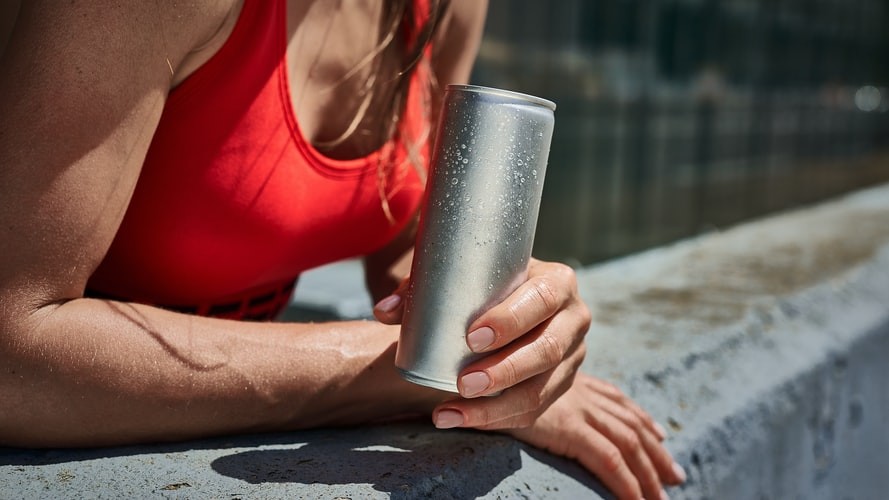Energy drinks are huge in the United States and other parts of the world. As our lives get busier, the first thing we always seem to sacrifice is our sleep. Designed to provide both a shot of energy and act as a source of nutrients, these drinks allow us to make it through the day without passing out before lunch time. Alleged death from consuming these drinks in clubs and during other activities have raised the red flag to legislatures worried about energy drink health concerns. What about these drinks is cause for alarm, and how much of these claims are accurate?
A Short History
The modern-day energy drink evolved from a drink that was first marketed in Japan during the 1960s Live betting odds. This drink, called Lipovitan-D (still available in Japan), contained a mix of B vitamins and taurine. The drink was originally created as a medical tonic for people suffering from chronic fatigue, but it grew in popularity as it was quickly adopted by the clubbing scene in Tokyo.
From Japan, the energy drink was taken up by several Asian countries as it made its way towards Europe and the United States. The first commercially sold drink in the US was Red Bull. Taking the basic drink formula used in Japan, the creator of Red Bull added caffeine and sugar to the mix, a staple of energy drinks to this day. The energy drink market exploded once Red Bull hit the scene, and several other companies threw their hat in the ring to vie for the consumer’s dollar.
Energy Drink Health Concerns

The Ingredients
If you were to individually look at each ingredient common to most energy drinks, you wouldn’t find anything too harmful.
Taurine is an amino acid commonly found in meat and fish proteins. It stabilizes cell membranes in the brain and heart and is essential in newborns since they cannot make it. Some studies even say that taurine can help improve athletic performance. Up to 3,000 milligrams, a day of supplemental taurine is considered safe.
B-vitamins help your body make energy from the food you eat. They are also critical nutrients for improving mood, memory, and other brain-related functions. These vitamins can be found in the proteins of fish, poultry, meat, eggs, and dairy products. Leafy green vegetables also contain B vitamins.
Caffeine is no stranger to most people as it is the featured ingredient in coffee. Coffee is consumed by millions of people with no ill effects, and most people require caffeine to make it to work every morning. Small doses of this substance can actually be quite beneficial to you by helping your metabolism or curbing chronic fatigue.
Sugar is probably the most harmful substance (at least isolated individually) found in these drinks. Sugar is the slow, silent killer as it is the main culprit in obesity and diabetes. Those sugary treats that you use to reward yourself or your child should be the first thing cut for those looking to improve their healthy lifestyles.
The Mix
If you’re drinking one energy drink every once and a while, then you should be fine. Taking Red Bull, the leading drink, as an example, it contains 1000 mg of taurine and 80 mg of caffeine. The consensus is that about 3000 mg of taurine and 200 to 300 mg of caffeine a day isn’t harmful. This, of course, does not apply to those who may suffer from high blood pressure, diabetes, or other ailments. The problem, however, is that not enough research has been done on the combination of all of these ingredients, such as the interaction between taurine and caffeine. Also, while the adverse effects of too much caffeine intake are well documented, such is not the case for taurine.
Energy drink health concerns are present in countries such as Germany, Australia, and New Zealand that have reported liver damage, kidney failure, respiratory disorders, agitation, confusion, seizures, psychotic conditions, nausea, vomiting, abdominal pain, rhabdomyolysis, tachycardia, cardiac dysrhythmias, hypertension, myocardial infarction, heart failure, and death from excess consumption.
One of the chief energy drink health concerns is that many teens and adolescents are drinking them like they used to drink their juice boxes in elementary school. A culture is developing in which these drinks are consumed not for their intended purpose (to provide energy!). One report estimates that 46% of the caffeine overdoses in the US reported in 2007 occurred in people younger than 19 years.
The alcohol factor
One of the most popular drinks on the club scene is mixing energy drinks with alcohol. This combination seems to allow your body to get high without that unpleasant feeling of drowsiness. If you go to the club frequently and consume this drink, you should probably stop. The Four Loko drink, partly an energy drink and an alcoholic drink, was recently banned in many states due to health concerns.
Many people believe that the depressant effects of alcohol can lessen the stimulating effects of energy drinks or vice versa. However, this is not true, and the stimulating effects of the energy drink can make you feel less intoxicated than you really are at the time. The fatigue you feel from drinking too much alcohol is your body’s way of saying, “Hey, time to slow down.” If you continue drinking (since you don’t feel that fatigue), you only magnify the effect of alcohol on your body and consume a potentially dangerous amount of caffeine (if you continue to drink the energy drink mix). This likely explains many of the club/energy drink-related deaths.
Conclusion
Everyone’s body is different, and no one should know your body better than you. Energy drink health concerns are being discussed in many places and may or may not be heavily regulated in various US states. No one can really force you to stop drinking these beverages, but hopefully, this article has provided you with enough. Information to make an informed decision.




